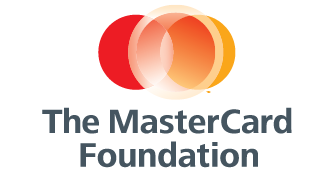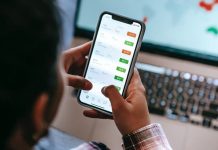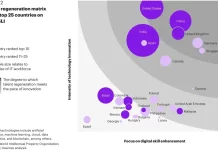
Increasing the capacity of financial institutions to provide low-balance savings accounts and reach low-income clients in developing countries with technology-driven products has become an important objective for locally-based financial inclusion practitioners in recent years.
To support this objective, in 2009 the United Nations Capital Development Fund (UNCDF), in partnership with The Bill & Melinda Gates Foundation, initiated a flagship $27 million global microfinance programme to provide loans and grants on a competitive basis to microfinance institutions, commercial banks, and financial cooperatives based in developing countries and pursuing a savings-based approach to expand operations to underserved markets. Savings, rather than credit, allow poor people to build a safety net to help them weather shocks and climb out of poverty. Savings by women leads to their empowerment, keeping kids in school, and better health outcomes.
In September 2011, in partnership with The MasterCard Foundation, UNCDF launched the expansion of MicroLead via a US$ 23.5 million six-year programme to increase access to financial services, particularly savings services, to a minimum of 450,000 low-income people in rural markets of Sub-Saharan Africa (SSA). Today, MicroLead is a $60 million programme, co-financed by UNCDF, The MasterCard Foundation, The Bill & Melinda Gates Foundation, and LIFT Myanmar.
The MicroLead Expansion programme has been recently evaluated by specialised evaluation firm Micro-Credit Ratings International Limited, which assessed the relevance, efficiency, effectiveness, sustainability, and likely impact of the programme.
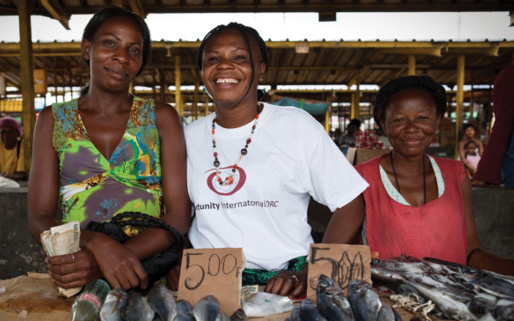
Under MicroLead Expansion in SSA, twelve projects in ten Sub-Saharan African countries received grants for a total of $16.5 million. The projects selected included – amongst others – downscaling of banks and the establishment of greenfield institutions; financial cooperative creation and strengthening; informal savings group linkages to formal financial institutions, MFI transformation into deposit-taking institutions, human-centred product design, and deployment of alternative delivery channels such as mobile money, rural agents, susu collectors, and point of sale devices.
The evaluation concluded that the MicroLead Expansion programme is well on-track to meeting the overarching goal of increased outreach of 450,000 additional low income depositors by 2017. As of March 2016, financial service providers supported by the programme developed 25 financial products with outreach to over 650,000 active voluntary depositors, with an aggregate deposit balance of $21 million. It also concluded that MicroLead’s savings-led financial inclusion strategy has the potential to make a significant contribution in countries where exclusion is high and financial depth is limited.
“Being able to bring banking services to the doorstep of an uneducated rural woman who fears entering a bank hall and seeing the transformation which these services bring to her and her family is what drives all of us on the MicroLead team,” said Pamela Eser, programme manager of MicroLead.
The evaluation recommended that the programme continue its efforts in building links between its financial service providers and informal savings groups; promoting digital financial services as a way to decrease the cost of providing services to rural populations; and ensuring financial service providers embed further financial education concepts when interacting with their clients.
“MicroLead is a key programme at UNCDF in support of last mile finance, domestic resource mobilisation, and women’s economic empowerment,” said Henri Dommel, director of the Financial Inclusion Practice Areas at UNCDF. “We look forward to further deepening our engagement on reaching women with customer-centric products and services through digital and other technological means, thus bringing down the cost to provide inclusive financial services by financial service providers as well as the cost to access them by under-served populations,” he added.
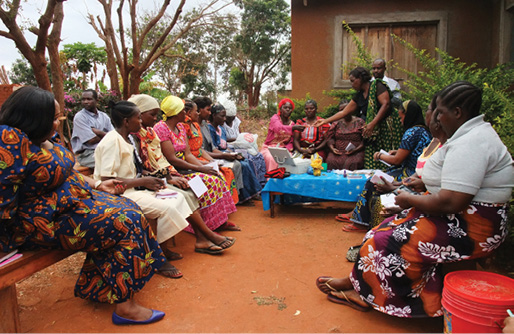
What Did We Learn?
- Linking informal savings groups to digital is an option that more and more financial service providers are employing to reach rural markets. Financial service providers continue to experiment with different models to understand what works most effectively and efficiently.
- Options on types of agent network deployment vary. Three routes being pursued by financial service providers include (i) a proprietary agent network implemented by the financial service provider where there is no aggregator (Caisse d’Epargne et de Crédit Cameroun) or when the financial service provider has the internal capacity to do so (NBS Bank Malawi); (ii) the reliance on the Mobile Network Operator agent network when there is a third party/aggregator (UGAFODE Uganda, Mwanga Community Bank Tanzania); (iii) a hybrid model, where the financial service provider uses both its own agent network and Mobile Network Operator agents such as in the case of Fidelity Bank Ghana.
- Mobile money remains an emerging trend, both as a value added service to reach and retain customers and also as a revenue stream for the financial service providers.
- Account dormancy is a constant issue as financial service providers learn (i) the importance of monitoring activity rates of accounts and (ii) how to encourage customers to transact regularly.
- Agent management is the next frontier for financial service providers expanding into agent banking. Financial service providers must understand how to recruit, train, and monitor agents while supporting, incentivizing, and integrating agents into their daily business.
- Increasing customer financial capability through financial education can be labour intensive and expensive, especially for financial service providers targeting informal savings groups. Financial service providers are working on different strategies to provide cost-effective financial and mobile education.

About UNCDF
UNCDF is the UN’s capital investment agency for the world’s 48 least developed countries. With its capital mandate and instruments, UNCDF offers “last mile” finance models that unlock public and private resources, especially at the domestic level, to reduce poverty and support local economic development.
UNCDF’s financing models work through two channels: financial inclusion that expands the opportunities for individuals, households, and small businesses to participate in the local economy, providing them with the tools they need to climb out of poverty and manage their financial lives; and by showing how localised investments — through fiscal decentralisation, innovative municipal finance, and structured project finance — can drive public and private funding that underpins local economic expansion and sustainable development.
By strengthening how finance works for poor people at the household, small enterprise, and local infrastructure levels, UNCDF contributes to SDG 1 on eradicating poverty and SDG 17 on the means of implementation. By identifying those market segments where innovative financing models can have transformational impact in helping to reach the last mile and address exclusion and inequalities of access, UNCDF contributes to a number of different SDGs. For more information, visit www.uncdf.org, follow @UNCDF, and subscribe for updates at ow.ly/CA0Qy.w
About MicroLead
MicroLead Expansion in Sub-Saharan Africa, a 5.5 year UNCDF Global Programme in partnership with The MasterCard Foundation (MCF), aims to increase access to savings-driven microfinance to a minimum 450,000 low income individuals, half of whom are women and half of whom reside in rural areas. The programme’s intention was to attract experienced institutions or networks from developed and developing countries to increase the capacity of financial institutions providing low balance savings either through the provision of technical assistance to financial service providers (FSPs) or through the establishment of Greenfield institutions. MLE also has a strong focus on harnessing the potential of technology driven alternate delivery channels (ADCs) and financial education in broadening outreach to financial services. For more information, visit uncdf.org/en/microlead and follow @UNCDFMicroLead
About The MasterCard Foundation
The MasterCard Foundation works with visionary organisations to provide greater access to education, skills training, and financial services for people living in poverty, primarily in Sub-Saharan Africa. As one of the largest, independent foundations, its work is guided by its mission to advance learning and promote financial inclusion in order to alleviate poverty. Based in Toronto, Canada, its independence was established by MasterCard when the foundation was created in 2006. For more information, please visit www.mastercardfdn.org or follow it on Twitter @MCFoundation
